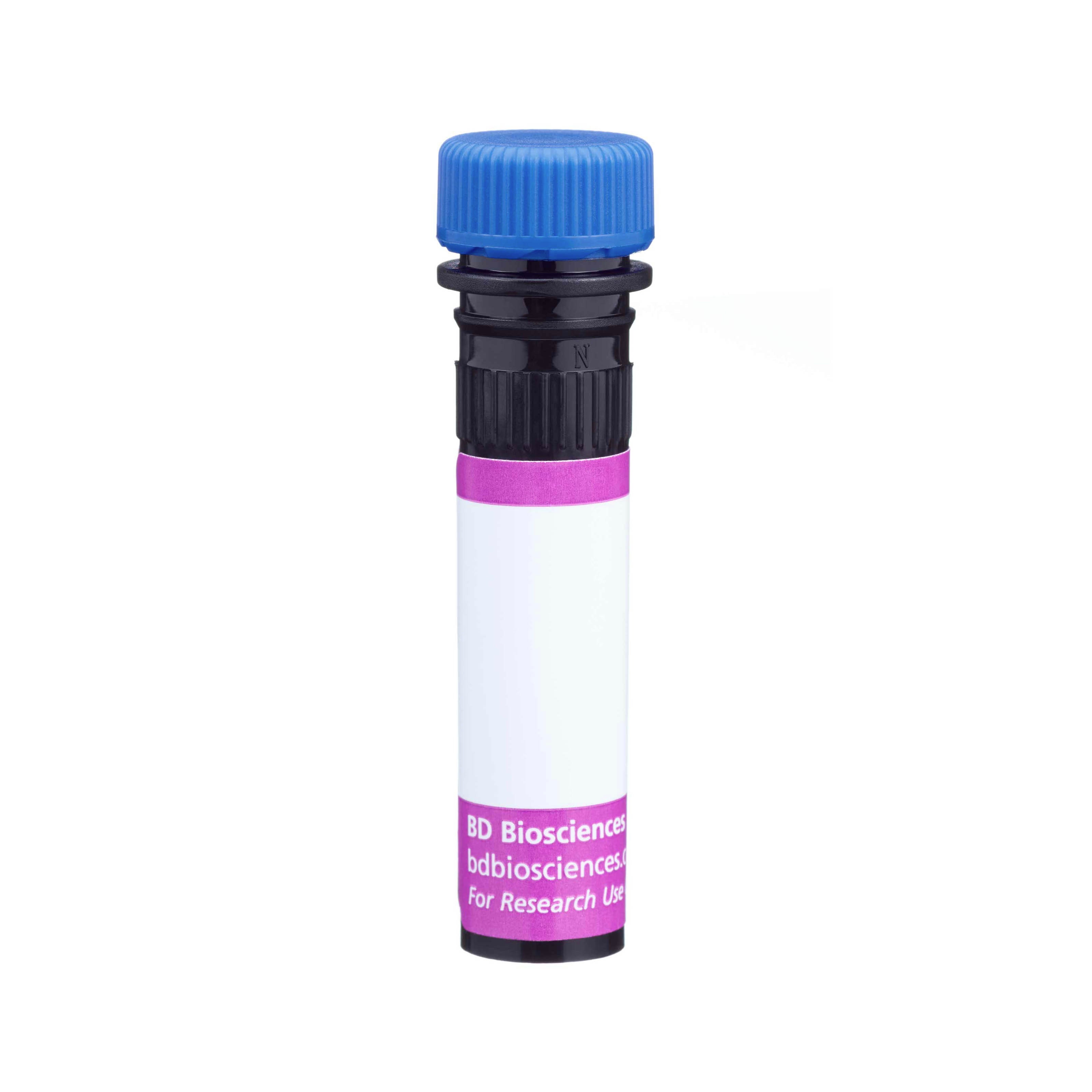Old Browser
Looks like you're visiting us from {countryName}.
Would you like to stay on the current country site or be switched to your country?





Analysis of Stat1 (pY701) in human peripheral blood monocytes. Peripheral blood mononuclear cells (PBMC) were either left unstimulated (unshaded) or stimulated (shaded) with 100 ng/ml (final concentration) BD Pharmingen™ Recombinant Human IFNγ (Cat. No. 554617) for 15 minutes at 37°C. The PBMC were fixed (BD Cytofix™ Fixation buffer, Cat. No. 554655) for 10 minutes at 37°C, then permeabilized (BD Phosflow™ Perm Buffer III, Cat. No. 558050) on ice for 30 minutes and then stained with Pacific Blue™ Mouse anti-Stat1(pY701). For data analysis, monocytes were selected by scatter profile. Flow cytometry was performed on a BD FACSCanto™ II flow cytometer.



BD Phosflow™ Pacific Blue™ Mouse anti-Stat1 (pY701)

BD Phosflow™ Pacific Blue™ Mouse anti-Stat1 (pY701)

Regulatory Status Legend
Any use of products other than the permitted use without the express written authorization of Becton, Dickinson and Company is strictly prohibited.
Preparation And Storage
Product Notices
- This reagent has been pre-diluted for use at the recommended Volume per Test. We typically use 1 × 10^6 cells in a 100-µl experimental sample (a test).
- Please refer to www.bdbiosciences.com/us/s/resources for technical protocols.
- The Alexa Fluor®, Pacific Blue™, and Cascade Blue® dye antibody conjugates in this product are sold under license from Molecular Probes, Inc. for research use only, excluding use in combination with microarrays, or as analyte specific reagents. The Alexa Fluor® dyes (except for Alexa Fluor® 430), Pacific Blue™ dye, and Cascade Blue® dye are covered by pending and issued patents.
- Pacific Blue™ has a maximum absorption of 416 nm and maximum emission of 451 nm. Before staining with this reagent, please confirm that your flow cytometer is capable of exciting the fluorochrome and discriminating the resulting fluorescence.
- Caution: Sodium azide yields highly toxic hydrazoic acid under acidic conditions. Dilute azide compounds in running water before discarding to avoid accumulation of potentially explosive deposits in plumbing.
- Source of all serum proteins is from USDA inspected abattoirs located in the United States.
- For fluorochrome spectra and suitable instrument settings, please refer to our Multicolor Flow Cytometry web page at www.bdbiosciences.com/colors.
- Species cross-reactivity detected in product development may not have been confirmed on every format and/or application.
Stat (Signal transducer and activators of transcription) proteins are critical mediators of the biologic activity of cytokines, including interleukins, interferons, erythropoietin, and growth factors. Ligand-receptor interaction leads to activation of constitutively associated JAK family kinases and subsequent recruitment/activation of Stat proteins by tyrosine phosphorylation. Active Stat proteins then move to the nucleus to promote transcription of cytokine-inducible genes. Seven Stat proteins have been cloned, each of which is differentially expressed and/or activated in a cytokine-specific and cell type-specific manner. Stat1 and Stat2 are components of the ISGF3 (Interferon-Stimulated Gene Factor 3) complex, which is the primary transcription activator induced by the binding of the interferon to a specific cell-surface receptor. Stat1 has two alternatively spliced isoforms, 91-kDa Stat1α and 84-kDa Stat1β; Stat1α has 38 additional C-terminal amino acids. In response to the binding of IFNα, IFNγ, EGF, PDGF, or CSF-1 to their respective receptors, the Stat1 subunits become tyrosine-phosphorylated at Y701, and the complex is translocated to the nucleus. This results in the formation of an active complex that includes the DNA-binding p48 subunit. This complex is responsible for modulating the transcription of the interferon-stimulated genes (ISGs).
The 14/P-STAT1 monoclonal antibody recognizes the phosphorylated Y701 in Stat1α and Stat1β.

Development References (3)
-
Bromberg J, Darnell JE. The role of STATs in transcriptional control and their impact on cellular function. Oncogene. 2000; 19(21):2468-2473. (Biology). View Reference
-
Darnell JE Jr. STATs and gene regulation. Science. 1997; 277(5332):1630-1635. (Biology). View Reference
-
Fu XY, Zhang JJ. Transcription factor p91 interacts with the epidermal growth factor receptor and mediates activation of the c-fos gene promoter. Cell. 1993; 74(6):1135-1145. (Biology). View Reference
Please refer to Support Documents for Quality Certificates
Global - Refer to manufacturer's instructions for use and related User Manuals and Technical data sheets before using this products as described
Comparisons, where applicable, are made against older BD Technology, manual methods or are general performance claims. Comparisons are not made against non-BD technologies, unless otherwise noted.
For Research Use Only. Not for use in diagnostic or therapeutic procedures.
Report a Site Issue
This form is intended to help us improve our website experience. For other support, please visit our Contact Us page.